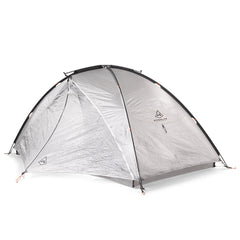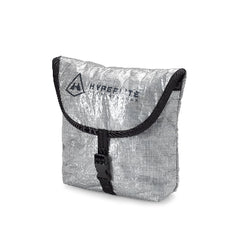Words and Photos by Jessica Normandeau
Between the conception of an idea and its actualization, a lot happens. In the case of skiing, it’s often a lot of walking, and in the case of French skiing, it’s often a lot of walking in ski boots. I’ve never seen a culture so happy going about their lives in ski boots long after the lifts stop running, or the skin track turns to dirt, but that’s a story for another time.

On the heels of one of the best winters in recent history where we live in Jackson, Wyoming, we found ourselves in the French Alps, La Grave, specifically, where snow totals were historically low. Still, as anyone who has traveled in these parts knows, a morning croissant and espresso are more than enough to make up for a bad winter, and we were happy just to be there.

My boyfriend Silas and I had come from Chamonix the day before and met up with one of my college friends Tom and his girlfriend, Kelsey. We didn’t know it at the time, but Tom’s ski bag had gone missing and wouldn’t surface for four days. We had booked a night at the Refuge du Goleon, so we drove the switchbacks up past La Grave to the village of Ventelon, where the road ends in winter. From there, we booted up, shouldered our packs, and started the walk through the centuries-old villages of Les Hieres and Hameau de Valfroide and continued on to the hut.

I say hut, but the refuge was more than the small forest service cabins of home. With a communal dining area, a full kitchen, and multiple bunk rooms, it was the most luxurious way I’ve ever spent the night in a ski-in hut. As opposed to its helicopter access Canadian counterparts, the French refuges are wildly affordable. For fifty-five euros, you are given not only a bunk to sleep in but a three-course dinner and breakfast. We were already in love with France, but this cemented the affair.

When we arrived at the refuge after several hours of skinning, we decided to drop gear and head out for a short afternoon tour to a peak overlooking the refuge, which sits in something of a cirque next to a large alpine lake. Across the cirque, we saw one of the most beautiful couloirs I had laid eyes on, a large funnel led into a steep-walled couloir all the way to the valley floor over three thousand feet below. We had crossed below it on the walk up to the refuge, the bottom a scattered mess of wet slides, but it was so tall we had no idea how impressive it really was. But what was it?

At dinner that night, sitting with a group of Frenchmen who spoke varying levels of English, all of which were far better than our French, we learned that the peak was called the Trois Eveches, or the “Three Bishoprics” named for the three sub-peaks of its summits. One man said the name was given because, at the top, you will be so scared you will see the pope as he put his hands together in prayer. The Trois Eveches had caught my eye, and we went to sleep that night tucked into our little bunk beds in the upper story of the refuge dreaming of the possibility of skiing it.

With a window of sun in the morning, we decided to hike up the col on the north face of the summit and then walk the ridge to at least look down the northwest couloir from the summit. Skiing it top down would be the most conservative approach and would allow us to look in from the top to make a decision if we wanted to ski it. Tom and Kelsey decided against joining, Tom was in rental touring boots a size too large, and it was a steep enough line to warrant wanting your own gear.

Silas and I moved quickly through the shade, eventually transitioning to boot packing about 300 feet from the summit. After a quick charcuterie at the saddle on top of the ridge, we put on crampons and continued the walk to the true summit of the Trois Eveches and the entrance of the Northwest couloir.

It was gorgeous and even steeper than it looked from across the valley. But all the signs were good. No blue ice in the entrance like I thought there might have been, just perfect edge-able hard-packed, steep skiing snow. Silas dropped in first, and we made our way down the couloir in sections, finding islands of safety to let the other pass as we leapfrogged our way down. We exited and shed layers at a small stream, grateful for the morning, for the trip, and for the days ahead.

PACKING LIST FOR THE REFUGE DU GOLEON
• Touring skis, boots, skins, poles (The usual)
• Base layers
• Crampons and an ice axe (Not necessary, but, you know, choose your own adventure!)
• Headlamp
• Light sleeping bag (There are warm blankets at the refuge, but they recommend you bring your own as well.)
• A charcuterie (This one is non-negotiable. Pick up a baguette from the boulangerie in town, sausage, and cheese from the market.)
• An Opinel (This is the knife of the French Alps! You’re going to need one for your charcuterie.)
• Sunglasses, a hat, and a buff for sun protection
• A Bottle of wine (Because this is France, after all) We packed up a bottle, but you can also buy wine and beer from the hut keepers)
• The HMG Headwall 55 (Big enough for all your overnight gear, but it packs down for day tours too!)























